I'm looking to take a python DataFrame with a bunch of timelines in it and plot these in a single figure. The DataFrame indices are Timestamps and there's a specific column, we'll call "sequence", that contains strings like "A" and "B". So the DataFrame looks something like this:
+--------------------------+---+
| 2014-07-01 00:01:00.0000 | A |
+--------------------------+---+
| 2014-07-01 00:02:00.0000 | B |
+--------------------------+---+
| 2014-07-01 00:04:00.0000 | A |
+--------------------------+---+
| 2014-07-01 00:08:00.0000 | A |
+--------------------------+---+
| 2014-07-01 00:08:00.0000 | B |
+--------------------------+---+
| 2014-07-01 00:10:00.0000 | B |
+--------------------------+---+
| 2014-07-01 00:11:00.0000 | B |
+--------------------------+---+
I'm looking for a plot something like this:
B | * * **
A | * * *
+------------
Timestamp
